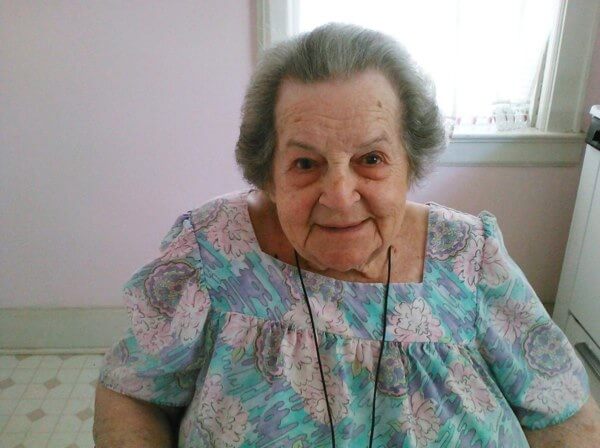By Mark Hallum
Ida Albert came to the United States at the age of 3 and, like many immigrants today, settled with her family in Astoria.
The Astoria of Albert’s time, however, was mostly agricultural land. This illustrates how much the borough has changed during the life of the soon-to-be 107-year-old Italian American and Bayside resident.
Ida, originally born “Aida” in Italy on Aug. 15, 1909, is the third daughter of a farmer who leased a plot of land near Ditmars Boulevard before developers bought the site to build affordable housing. Albert’s father, Guisippi Del Pizzo, an Italian nationalist, named three of his daughters after fellow Italian GiuseppeVerdi’s operas. He was forced to move the family to a farm in New Jersey, only to return to Astoria after a few years. He later became ill with throat cancer and died at the age of 40.
Albert recalls her mother Guiseppina and three sisters struggling to get by. At the age of 8, Albert was at work making fireworks for a man in New Jersey, who paid 50 cents per day and operated out of his garage.
Albert’s oldest sister Mary, then only 11, did not qualify for her working papers, which required a minimum age of 14. But her mother convinced her school principal to lie about her age and she soon went work in an Astoria silk mill.
“In those days, silk was a big thing,” Albert recalled. “She ran four big looms. Then she brought my mother in and she taught my mother how to do that. And that’s how my mother raised us, — we were four girls.”
Albert would follow her oldest sister and mother into textile manufacturing as a seamstress within a few years. Because she had to work, she never attended high school. Her youngest sister Violet died of tuberculosis at the age of 16.
In 1933, at the height of the Great Depression, Ida married Paul Albert, whose Italian surname, Albergo, was changed by the nuns at the Catholic school he attended.
“The Depression in Astoria, at that time, you were rationed off. You weren’t allowed to go to the store and buy too much of anything,” Albert said, adding that she was one of the lucky few to have a job all through the economic standstill.
It was not until 1941 that Albert’s first son, Frank, was born. Her daughter, Lorraine, was born in 1944. During World War II, Paul Albert was not drafted because he had a family.
Ida’s family was once again displaced by development in Astoria when the building they lived in was torn down to make way for the Triborough Bridge.
In the 1960s, Albert, along with her mother and son, bought a house in Bayside on 220th Street for $23,000.
Albert has two grandchildren, one of whom commands an aircraft carrier in the U.S. Navy, and three great-grandchildren from her daughter Lorraine.
Albert talks about her life in Bayside as if nothing has changed in the 50 years she has been there, but she also mentions that in those years her son died at the age of 49, her husband died of a blood disease in 1983, and her section of the neighborhood has evolved from a primarily Italian community to a haven for Korean and Chinese immigrants.
At well over a century old, the only medications Albert currently takes are eye drops for glaucoma.
Reach reporter Mark Hallum by e-mail at mhall



































